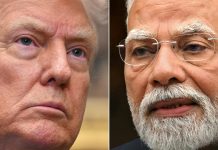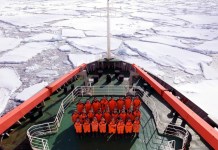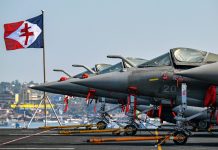India will work with a French company, most likely Safran, to develop and manufacture fighter jet engines for its 5th-gen AMCA, India’s defence minister said.
Defence Minister Rajnath Singh in May approved the prototype of a 5th-generation Advanced Medium Combat Aircraft (AMCA), calling it a “significant push towards enhancing India’s indigenous defence capabilities”.
Singh, in a speech at a conference in New Delhi on Friday, gave more details about developing fighter jet aircraft engines in the country.
“We are moving forward to manufacture aircraft engines in India itself,” Singh said, in comments broadcast by Indian media. “We are collaborating with a French company to start engine production in India.”
Singh did not name the company, but Indian media widely reported the company to be Safran, which has been working in India for decades in the aviation and defence sectors.
There was no immediate confirmation.
India, one of the world’s largest arms importers, has made the modernisation of its forces a top priority and has made repeated pushes to boost local arms production.
The world’s most populous nation has deepened defence cooperation with Western countries in recent years, including the Quad alliance with the United States, Japan, and Australia.
India signed in April a multi-billion-dollar deal to purchase 26 Rafale fighter jets from France’s Dassault Aviation. It would join 36 Rafale fighters already acquired, and replace the Russian MiG-29K jets.
The AMCA program was conceived in the early 2010s as a follow-on to the Light Combat Aircraft (LCA) Tejas. However, despite its strategic importance, progress was tepid due to multiple challenges.
Initial timelines projected a first flight by 2020 and production by 2025, but these slipped to 2028 and 2038-39 due to funding constraints and bureaucratic delays.
The program’s preliminary design phase began in 2015, with CCS approval only in 2024. The Tejas program’s prolonged development (from the 1980s to the late 2010s) is a cautionary tale, highlighting systemic issues in India’s defence ecosystem.
The program lacked an empowered governance structure, slow decision-making, and HAL’s overburdened capacity. The absence of an indigenous high-thrust engine has been a persistent hurdle for the program; the Kaveri engine program’s inability to meet requirements forced reliance on foreign engines, delaying self-reliance.
French Safran Offer
France’s Safran’s offer is the oldest on the table.
In July 2023, the French government reportedly gave a nod to Safran to jointly design, develop, test, manufacture, and certify an engine with India that will power twin-engine advanced multi-role combat aircraft (AMCA) and the twin-engine deck-based fighter for Indian aircraft carriers.

Safran proposes to develop the AMCA engine by enhancing its proven M88 engine. Safran will enhance the M88’s core technology, which produces 50 kN dry and 75 kN with afterburner, to achieve a higher thrust output of approximately 75–80 kN dry and 110–120 kN with afterburner.
Because it leverages proven technology, the engine’s development timeframe can be aligned with the AMCA’s development timeline, with prototypes expected by 2026–27 and first flights by 2028.
Safran’s offer includes full technology transfer, covering critical technologies like single-crystal blades, thermal barrier coatings, and advanced combustors, ensuring India gains indigenous manufacturing and design capabilities.
This enhanced engine will incorporate new components, such as an improved compressor and afterburner, to meet the AMCA’s performance needs, including supercruise capability. In addition, the offer includes Safran setting up a centre of excellence in gas turbine technology in India with full design and metallurgical precision software tools.
With Inputs from Agence France-Presse




